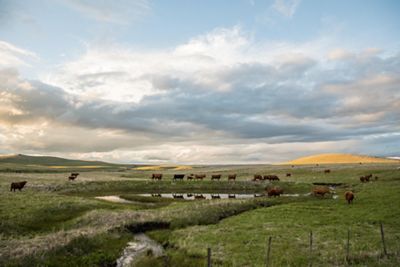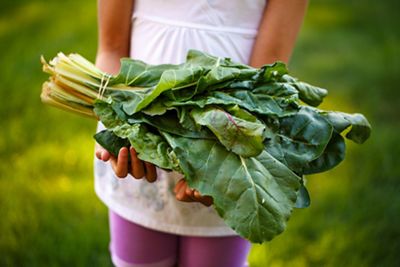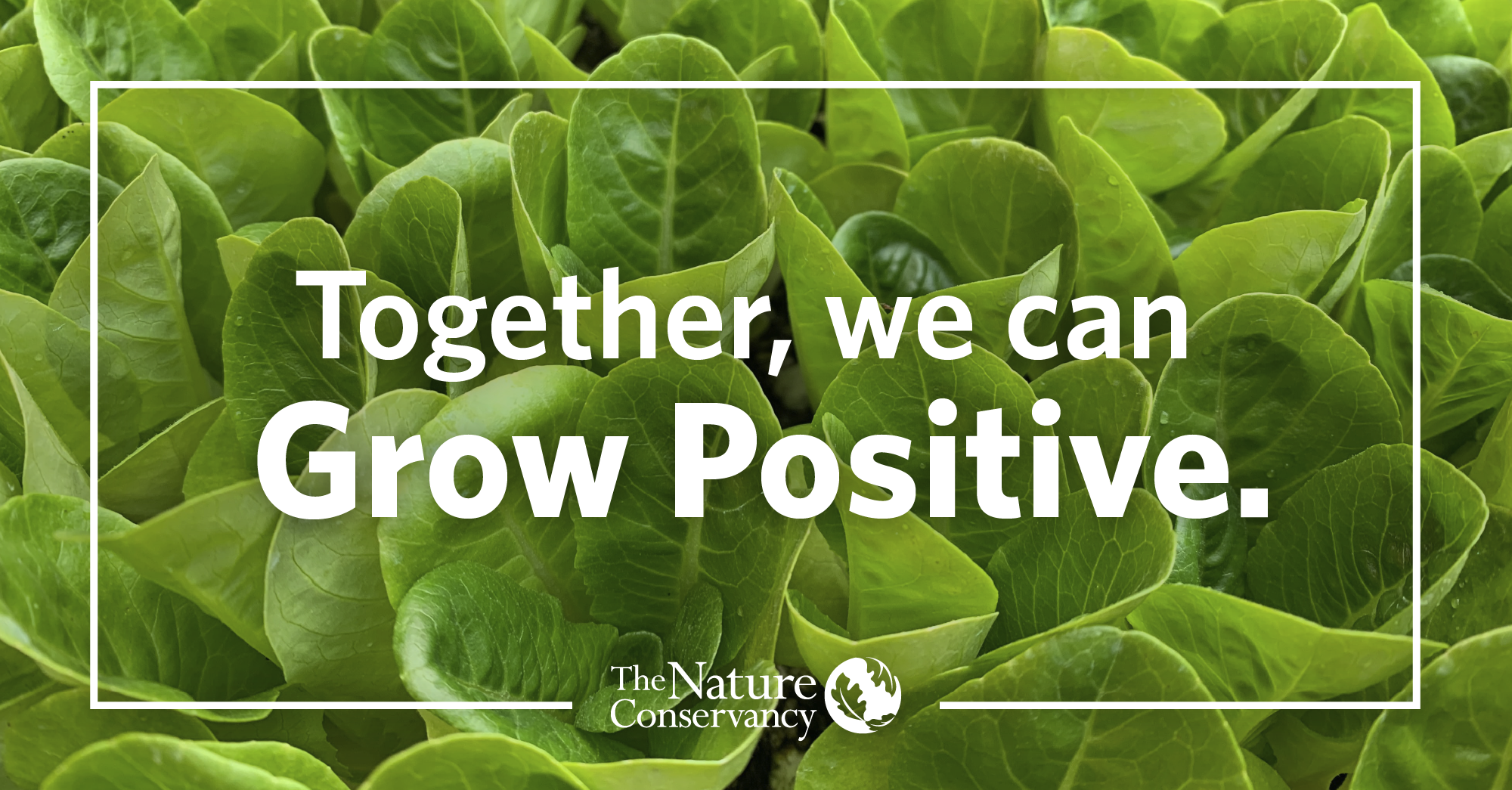The Global Food System Is Ripe for Change
How today’s biggest threat to nature could become its best ally.
Few things shape our planet on the scale that food does. And right now, we are on a dangerous path, as food production continues to accelerate climate change and biodiversity loss. Compounding the challenge, we need to produce even more food. With the global population expected to reach nearly 10 billion and global income nearly tripling by 2050, the UN expects a 50% increase in food demand overall, and a 73% increase in demand for animal protein.
To date, agriculture and the environment have largely been viewed as a zero-sum game. Some environmental damage, the thinking has gone, is an unfortunate but necessary trade-off to increase food production and feed humanity. But this doesn’t have to be the case—we now know how to feed a growing population without destroying the planet. But we must think beyond just producing more and reducing harm—we must invest now to shift to a food system that restores nature instead of depleting it.
A growing threat—and an even bigger opportunity.
Food production has altered our planet more than any other human activity. It accounts for 24% of greenhouse emissions and 70% of all freshwater usage; it is perhaps the single greatest cause of biodiversity loss. Food production is also the cause of 80% of global habitat loss—a trend that is accelerating.
In addition to growing demand for more food, many farming practices actively degrade soil health over time, until eventually it’s no longer productive. Often farmers are forced to abandon the degraded land and convert new landscapes for crops or grazing. If we don’t reverse these trends, we could lose another 400 million hectares of natural habitat by 2050—an area twice the size of Mexico.
Quote
We are at a pivotal moment in history: there has never a been better—or a more crucial—moment to make positive changes across the food producing sectors.
And yet the vast scale of our food system means it can be one of the greatest levers for positive change to the planet. We are at a pivotal moment in history: there has never been a better—or a more crucial—moment to make changes across the food producing sectors.
Report: Nature-Positive Recovery
Principles for investing in nature-based jobs and initiatives to stimulate the post-COVID economy. Read the report from Nature4Climate ›
The economic shock caused by the COVID-19 pandemic has left many of the world’s countries struggling to rebuild societies and economies. But there’s a growing recognition that rebuilding cannot be a return to “normal.” We can build something better: an economic system that is, in the words of IMF lead Kristalina Georgieva, “greener, smarter and fairer for all.”
Food production is not only the biggest force affecting nature—it also accounts for nearly 10% of the global economy. So if we want greener, fairer economies, a primary target should be to transform our food economy to sustain nature while also feeding more people and better supporting the livelihoods of farmers, fishers and other producers.
Sound like an impossible task? It’s entirely possible. In fact, the seeds of this transformation have already been sown. It’s the shift to regenerative food systems.

What are regenerative food systems?
Diversity in Food Production Systems
Mapping and understanding the diversity of food production around the world helps inform food systems transformation. Download the Foodscapes Report here ›
Regenerative soil practices offer one clear example. Row cropping techniques such as reduced or no-tillage planting and the use of cover crops can restore the complex soil biology that is key to long-term crop production, while also capturing more greenhouse gas emissions and reducing nutrient runoff. More food and a healthier environment.
But soil health is just one example—regenerative food systems can also include improved grazing, restorative aquaculture and better fisheries management. Accelerating the adoption of regenerative production practices within the global food economy could be the most cost-effective opportunity we have to restore nature. At The Nature Conservancy, we are inspired by the pragmatic potential of this opportunity.


The scale of the opportunity
Currently, 37% of the Earth’s land area is used to produce food, to say nothing of all the food we source from the ocean, which makes up a growing portion of global diets. Implementing regenerative practices across all of these land-and-seascapes represents an enormous opportunity, but also a herculean challenge. It requires system-wide change that goes far beyond farmers, fishers and pastoralists. Here’s how we can get there.
Encourage governments to reform subsidies
For starters, we can work with global policy makers to improve fiscal policy around food. Globally, governments spend as much as $500 billion a year on farming, forestry and fisheries subsidies that degrade nature—more than twice what they are spending to protect or restore nature. We need to work with policymakers to shift these subsidies away from practices focused exclusively on production and output to support growers in this shift to regenerative practices that restore soil and water health while also sustaining or increasing production.

Report: Financing Nature
The most comprehensive assessment to date on how much the world currently spends to benefit nature, how much more we need to be spending, and how we can close that nature funding gap now. Get the report now ›
This shift is crucial—not only for the long-term security of our food production but also to address the twin planetary crises currently plaguing our society: climate change and biodiversity loss. Agricultural subsidy reform is perhaps the single biggest thing we can do to close the biodiversity funding gap—the difference between what we currently spend to protect nature, and how much we currently need to spend—according to a new report from the Paulson Institute, TNC and the Cornell Atkinson Center for Sustainability. In fact, approximately 40% of the $700 billion funding gap could be closed just by redirecting subsidies to support nature-positive production.
Quote
We must think beyond just producing more and reducing harm—we can invest now to shift to a food system that restores nature instead of depleting it.
Reward market actors for performance
Government subsidies underpin market realities, and market actors throughout the food supply chain are increasingly taking responsibility for their role supporting nature. But while many consumer-facing companies have made advances in transparency and accountability, similar progress has not been made along the rest of the supply chain. Until it is, it is hard to reward farmers for good practices.
Dozens of companies signed a commitment to eliminate deforestation and conversion from key commodity supply chains by 2020—none of them met the commitment. Soy and beef traders still do not report on basic metrics about habitat conversion as recommended by the Accountability Framework, which many companies cite as the reference point for their commitments. We simply cannot accept another decade of missed targets—now is the time our collective bar should be set at exceeding them. There’s a growing willingness to reward companies that are progressing on such goals, but we can’t reward their performance if they aren’t reporting on it.
Our global insights, straight to your inbox
Get our latest research, insights and solutions to today’s sustainability challenges.
Sign UpRecognize and support smallholders, rural communities and Indigenous Peoples
Global transformation doesn’t exclusively mean working with massive producers—we can consider scaling opportunities in terms of both influence and sheer quantity. There are more than 570 million farms worldwide, and most of them are small and family operated. In fact, family-owned farms manage almost 75% of the world’s agricultural land. That makes smallholders crucial for global adoption of regenerative practices. Indigenous smallholders play a particularly crucial role, as their lands hold an outsized share of the world’s biodiversity and natural carbon stores.
But Indigenous communities often struggle to have their land tenure recognized—supporting their contributions to a regenerative transformation means taking steps to protect their rights. Other communities may not have the capital or expertise to make the shift to regenerative practices on their own. Governments, corporations, and NGOs like TNC can play a crucial role helping these millions of producers adopt regenerative practices that will improve the health of the planet and their operations in the long term.

It’s time to grow positive.
Our need for food is not going away or shrinking—it is growing. And the way we currently grow food is degrading the planet in ways that, paradoxically, make it harder and harder to grow food. But I am confident we can escape this negative feedback loop. By leveraging the pace of technological innovation, harnessing the rapidly evolving science of regeneration and capitalizing on the new commitments from global companies toward regenerative business models, a new food economy is on the horizon.
A regenerative food system is our best option—not just to protect nature, but to ensure human life survives and thrives. Together we can turn today’s biggest threat to nature into its greatest opportunity—a food system that creates positive growth for communities, economies and the planet.
Global Insights
Check out our latest thinking and real-world solutions to some of the most complex challenges facing people and the planet today.





